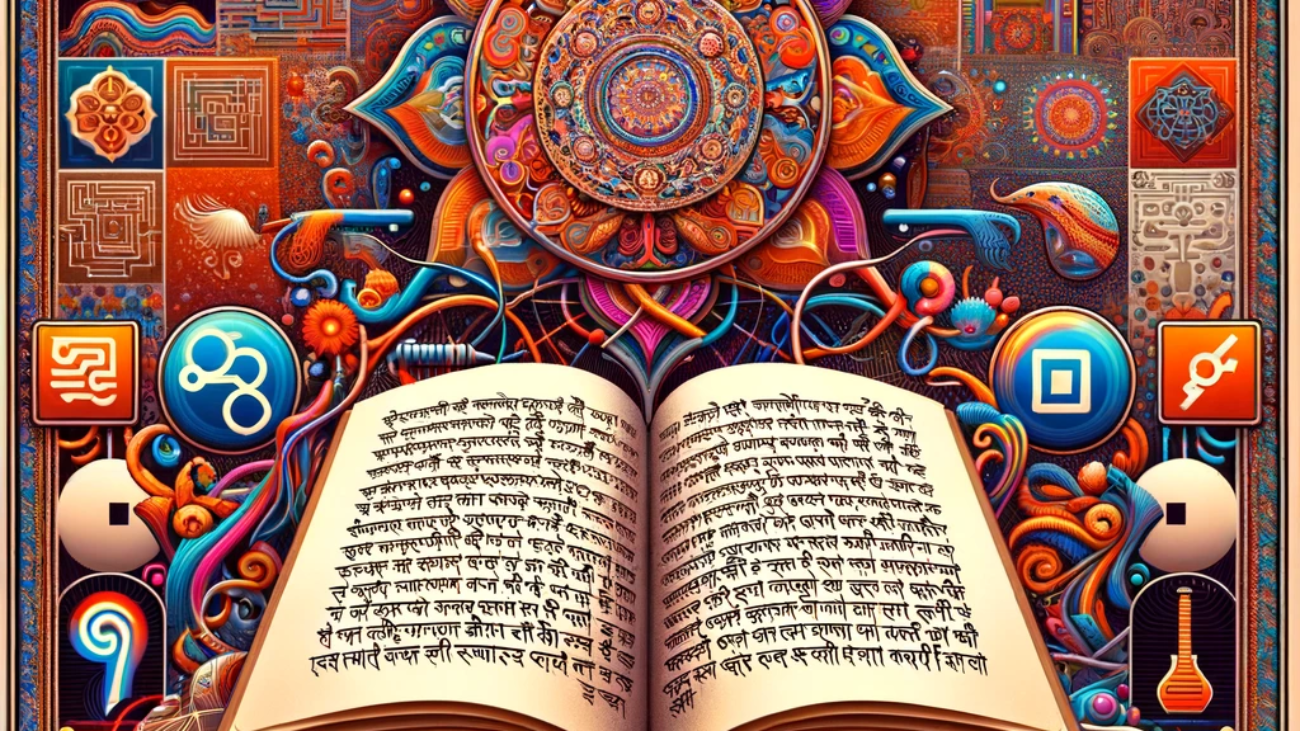In the modern digital age, the preservation and accessibility of ancient languages are paramount for maintaining our cultural heritage. Sanskrit, often regarded as the language of the gods, holds a treasure trove of knowledge encompassing literature, science, philosophy, and art. However, the sheer volume and complexity of Sanskrit texts pose significant challenges for scholars and educators. Enter Artificial Intelligence (AI) – a powerful tool that can revolutionize the way we process, preserve, and learn this ancient language. AI-driven Sanskrit language processing has the potential to bridge the gap between past and present, ensuring that the wisdom of our ancestors is not lost to time.
The application of AI in Sanskrit language processing involves the development of sophisticated tools capable of digitizing, translating, and analyzing ancient texts. These tools not only facilitate the preservation of manuscripts but also make them accessible to a broader audience. By leveraging AI, we can create interactive and engaging learning platforms, enhance research capabilities, and ensure the accurate transmission of oral traditions. This article explores the various facets of AI-driven Sanskrit language processing and its significant contributions to cultural heritage and education.
Automated Sanskrit Manuscript Digitization and Translation
One of the foremost applications of AI in Sanskrit language processing is the automated digitization and translation of manuscripts. Traditional methods of preserving these texts are labor-intensive and prone to errors. AI-powered Optical Character Recognition (OCR) software can accurately scan and digitize Sanskrit scripts, converting them into machine-readable formats. This process not only preserves the original manuscripts but also enables easy storage, retrieval, and sharing of these texts in digital libraries.
Furthermore, AI algorithms specialized in machine translation can render Sanskrit texts into multiple languages, making the rich knowledge contained within these manuscripts accessible to a global audience. These translations can significantly aid researchers, educators, and enthusiasts in understanding and appreciating the depth and breadth of Sanskrit literature. By automating these processes, AI ensures that ancient wisdom is not only preserved but also propagated widely, fostering a renewed interest in Sanskrit studies.
AI-Powered Sanskrit Learning Platforms
In the realm of education, AI-driven platforms are transforming the way Sanskrit is taught and learned. Traditional methods of learning Sanskrit can be daunting for many due to the complexity of its grammar and syntax. AI-powered educational platforms offer personalized learning experiences that adapt to individual learners’ needs and proficiency levels. These platforms utilize Natural Language Processing (NLP) to provide real-time feedback on pronunciation, grammar, and syntax, making the learning process more interactive and engaging.
Moreover, these AI-driven platforms can gamify the learning experience, incorporating quizzes, interactive exercises, and virtual assistants to maintain learners’ interest and motivation. By making Sanskrit learning accessible and enjoyable, AI-powered platforms are playing a crucial role in revitalizing interest in this ancient language among younger generations. This renewed interest not only preserves the language but also ensures its continued relevance in contemporary education.

Sanskrit Text Summarization and Semantic Analysis
Research in Sanskrit literature can be a daunting task due to the vast and intricate nature of the texts. AI algorithms capable of summarizing and analyzing the semantic content of Sanskrit texts offer a solution to this challenge. These tools can process large corpora of literature, extracting key information and providing concise summaries. This capability significantly enhances the efficiency of research, allowing scholars to focus on critical analysis and interpretation.
Semantic analysis tools, powered by AI, can delve deeper into the texts, uncovering nuanced meanings and connections that might be overlooked by human readers. These tools can identify themes, motifs, and stylistic patterns across different works, offering new insights into the cultural and historical contexts of the texts. By augmenting traditional research methods with AI-driven tools, we can achieve a more comprehensive understanding of Sanskrit literature and its significance.
AI-Enhanced Preservation of Oral Sanskrit Traditions
Oral traditions are an integral part of Sanskrit heritage, encompassing Vedic chants, hymns, and recitations passed down through generations. Preserving these oral traditions poses unique challenges, as they are susceptible to variations and loss over time. AI can play a pivotal role in recording, analyzing, and generating accurate renditions of these oral traditions. Advanced speech recognition and synthesis technologies can capture the nuances of pronunciation, intonation, and rhythm, ensuring that the oral heritage is preserved in its authentic form.
Additionally, AI-powered virtual training modules can be developed to teach and practice these oral traditions. These modules can provide real-time feedback and corrections, helping learners achieve precision and authenticity in their recitations. By preserving and promoting oral Sanskrit traditions through AI, we ensure that these cultural treasures remain vibrant and accessible for future generations.
Conclusion
The integration of AI into Sanskrit language processing heralds a new era in the preservation and propagation of this ancient language. Automated digitization and translation of manuscripts ensure that the wealth of knowledge contained within Sanskrit texts is preserved and made accessible to a global audience. AI-powered educational platforms are revolutionizing the way Sanskrit is taught and learned, making the process more engaging and personalized.
AI’s ability to summarize and analyze Sanskrit texts enhances research capabilities, while its role in preserving oral traditions ensures the continuation of cultural heritage. As we harness the power of AI to bridge the gap between ancient wisdom and modern technology, we open new avenues for learning, research, and appreciation of Sanskrit. The fusion of AI and Sanskrit language processing not only safeguards our cultural heritage but also enriches it, ensuring that the timeless wisdom of the past continues to illuminate our present and future.
In conclusion, AI-driven Sanskrit language processing stands at the intersection of tradition and innovation. By leveraging cutting-edge technology, we can preserve and promote the rich cultural heritage of Sanskrit, ensuring its relevance and vitality for generations to come. This harmonious blend of ancient and modern holds the promise of a brighter future, where the wisdom of the past is seamlessly integrated into the digital age.


Leave A Comment